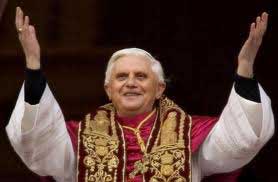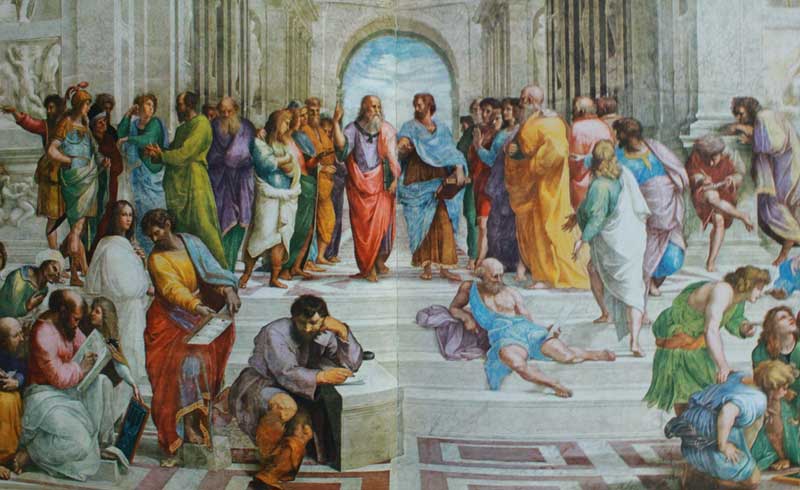Non Habemus Papam

February 11, 2013
Commentary
Cornelius Sullivan- Soon we will not have a Pope. Pope Benedict XVI will retire to a monastery inside the Vatican to pray, he will no longer be the Holy Father but may remain like a God Father, not the Cosa Nostra type, more like the mostly unseen spiritual presence assumed by Catholic godfathers when they become baptismal sponsors. He has yet to define what his new title will be. He will be Cardinal Ratzinger.
It is easy and natural to joke about such events as the retirement of a pope because humor involves the clashes of matrixes. A friend said that the conclave should elect Joseph Ratzinger. This announcement is shocking because it is counter traditional and we thought we knew Ratzinger as a traditional pope. He has surprised at times with his daring.
Perhaps his decision can be best understood if we look at the theme of his pontificate, which is the compatibility of faith and reason. Not long ago I was struck by what Vatican Art Historian, Elizabeth Lev, said in the room in the Vatican Museum, that was once the private study of Pope Julius II, the Stanza della Segnatura, with the Raphael frescos of The School of Athens and The Disputation on the Holy Sacrament. She said these paintings used to be called Theology and Philosophy, but now, in the reign of Pope Benedict XVII, they can be called Faith and Reason.
The Vatican journalist who has been the voice of Vaticano, the EWTN television weekly of Vatican news, David Kerr, said today that Pope Benedict has supplanted the 17th and 18th Century Enlightenment errors that seperated faith and reason and the idea that religion should exist only in the private sphere. Kerr said that Benedict knows the tyranny of Relativism and has stressed that Christianity is not a philosophical system but rather a personal relationship.
Benedict was daring at Regensburg, has been bold with candid interviews, and has dared to do Twitter. He never tried to emulate his revered predecessor. Not an actor, he could not be other than the university professor that he is. Bishops from around the world used to be interviewed individually. He changed the format to interviews with groups of fourteen. He conducted them as if they were university seminars.
Two weeks ago I watched the film, a collaboration of Italian TV RAI called, “We have a Pope”, “Habemus Papam”. It was made in
This is a serious announcement no doubt chosen to be on the Feast of Our Lady of Lourdes “The Day of the Sick”. Out of curiosity, I looked to see what the liturgical calendar would say about February 28th. It is “Thursday of the Second Week of Lent”, not remarkable. It seems as though the choices of these dates, sacred for the former, and mundane, end of the month, for the latter, say something about the real world practicality of this decision.
Because Pope Benedict is the most articulate and clear writer, we can understand his reasoning from his own statement. There may be at some time more particular revelations about his health, but at this point, we can put to rest any conspiracy theories. No one knew this was coming and he said, “I have come to the certainty that my strengths, due to an advanced age, are no longer suited to an adequate exercise of the Petrine ministry.” And “with full freedom I declare that I renounce the ministry of Bishop of
This decision shows independence and a special humility. If you are “the chosen one” you might think that the ministry depends only on you. Pope Benedict could have created a Papal substitute of some sort to sit through the three hour Masses at
With events like this, many of us wish that things could stay the same, stay as they are. After eight years, Papa Ratzinger has settled in as pope. The Greek philosopher Heraclitus said that the only thing constant is change. He appears in the foreground of Raphael’s School of Athens. He is the solid sculptural figure that the painter added last, only after Bramante, Pope Julius I I’s architect, was able to sneak him into the Sistine Chapel to see the great revolution in painting that the sculptor had made on the ceiling. Raphael embraced change and realized that he must learn a new way to paint because of what he had seen, and in tribute he made his Heraclitus a portrait of Michelangelo.
I will miss seeing Papa Benedetto regularly. I will imagine him writing his books and still being (perhaps not walking briskly as he did) in the

The School of Athens, Raphael, Stanza della Segnatura,